‘3D Pinball Space Cadet’ – The flippin' story of the most recognizable game demo on Windows
The whirring image of being taken in by a wormhole might as well extend to real life for anyone familiar with 3D Pinball Space Cadet, the free pre-installed game on Microsoft’s operating systems which became a staple on its Office software in the early 2000s.
This nostalgic piece of video game memory, from the unapologetic audio effects to its crisp controls, will perhaps go down in history as one of the most successful game demos of all time.
You read that right. Space Cadet is only one of the available levels from the full game, Full Tilt! Pinball (1995), developed by Cinematronics and published by Maxis, the company behind the beloved The Sims franchise.
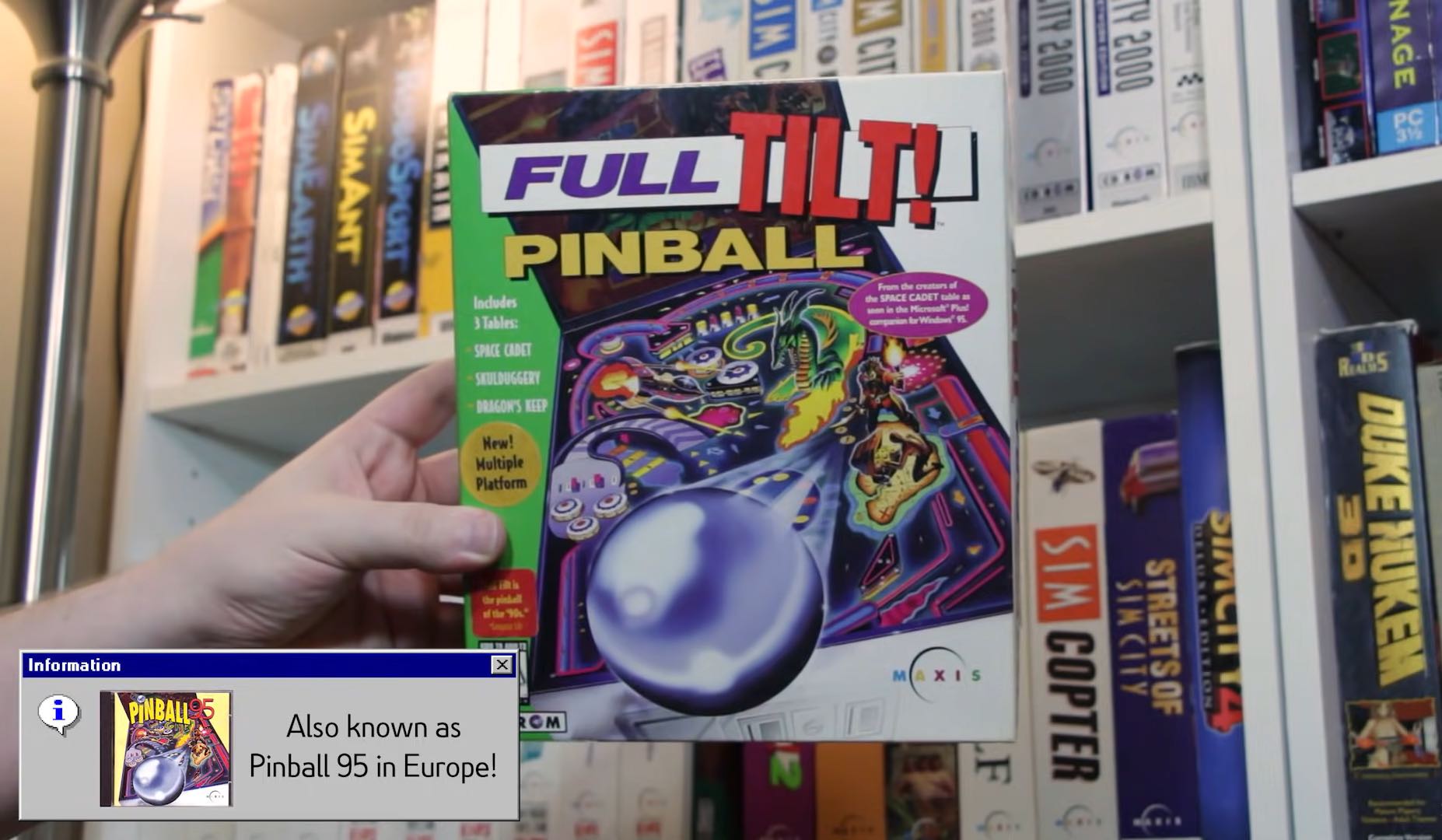
Millennials all over could probably harken back to their early computer subjects in school. The teacher is out for the day and a substitute sits in asking the entire class to continue with their assigned work. Despite knowing better, you fire up the 3D Pinball game tucked neatly in its folder nestled with Solitaire and Minesweeper.
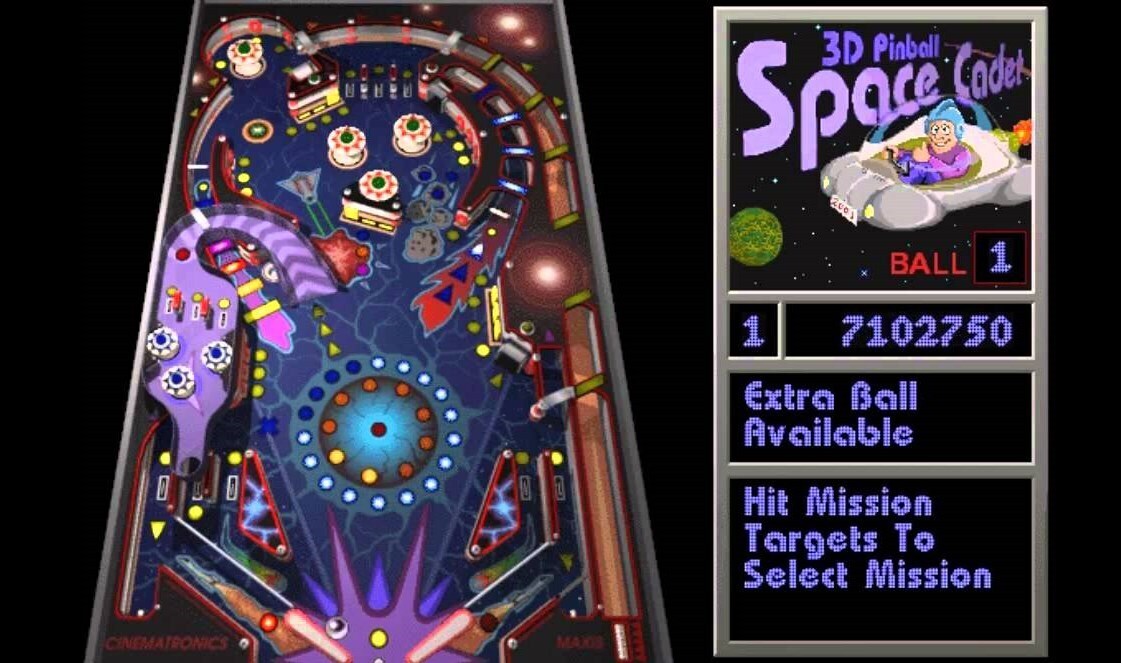
Rarely would an image have the ability to make you hear sounds. In this case, the vortex-like audio boot sequence triggering your muscle memory to place fingers at the “Z” and “/” keys, ready to move the flippers on the table.
If today’s generation has the Dinosaur Game (2014), a built-in game released by Google for its Chrome web browser, people in the mid-aughts have Space Cadet. Millennials or perhaps even employees who were bored at work didn’t mind a round or two of the game while waiting for the shaky (at best) internet connection to come back online.
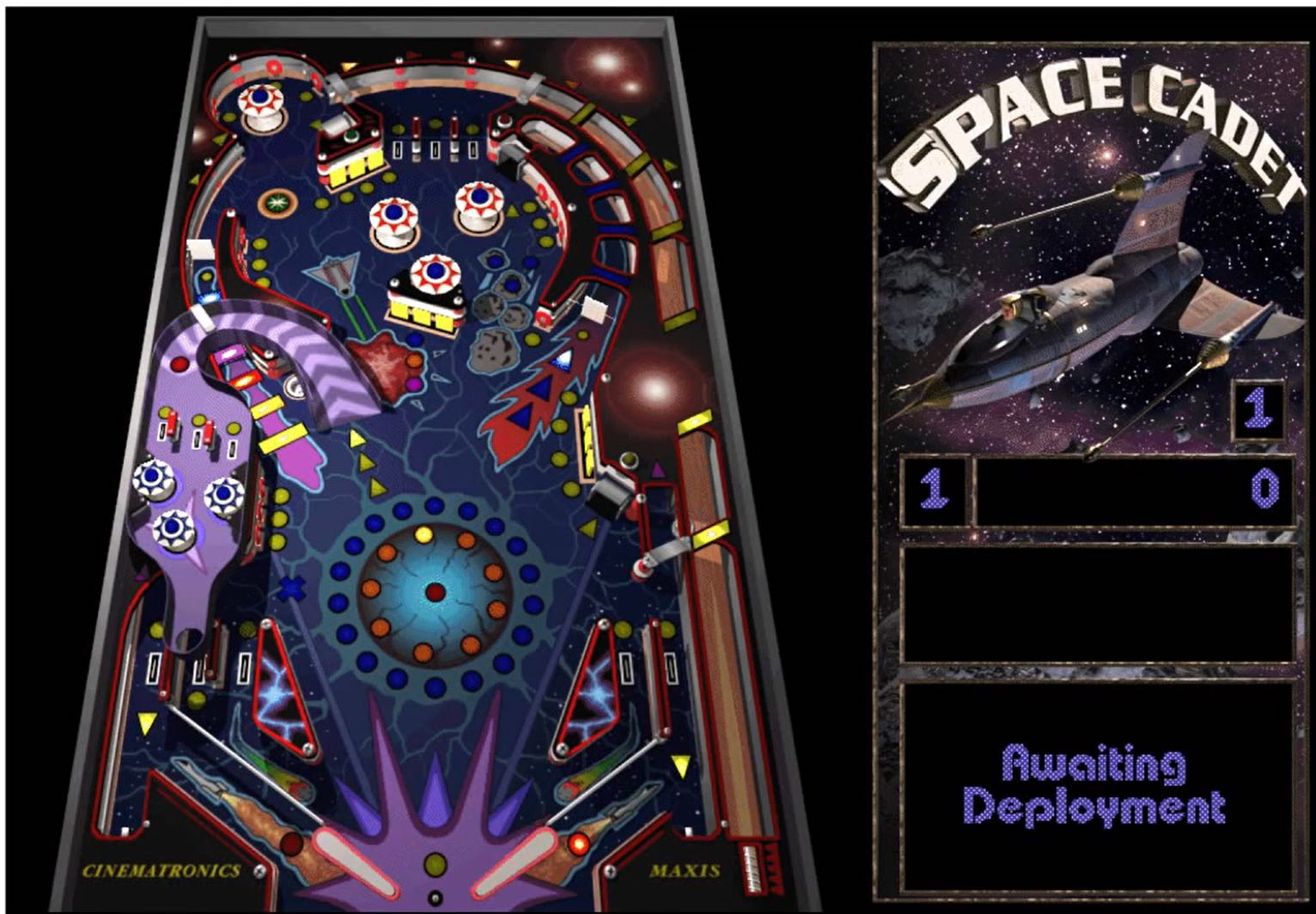
A simple yet effective way to pass the time, Space Cadet provided many people their first experience playing a pinball game, both physically and virtually. Sure, it can’t compare to today’s standards of readily available mobile games, but at that time, it was an innovative piece of software.
Although most will probably associate the pinball game to the equally famous Windows XP, Space Cadet was bundled earlier, in Microsoft Plus!, the discounted commercial version of the Windows 95 operating system.
Awaiting Deployment
The year was 1994. Many are still reeling from Chicago Bulls guard Michael Jordan's decision to retire from basketball despite his first appearance on the baseball diamond that same year. It’s also the time when we saw the first season of the eventual hit show about six 20-somethings in New York called Friends.
All the while, looming on the horizon is the speculated release of Microsoft’s new operating system, which was hinted upon earlier that year. Promised to be the company’s most advanced iteration since its first 10 years ago; the eventual Windows 95 is the operating system responsible for many modern conveniences end-users utilize today. The inclusion of “plug and play” or the ability to automatically detect a newly installed driver was pivotal at the time for device management and hardware support.
As part of its grand ad campaign for Windows 95, Microsoft even used the star power of Jennifer Aniston and Matthew Perry in a 30-minute promotional video highlighting navigation in the OS. Showcasing its new features, it revealed the now-iconic Start button or menu for the first time. Could it be any more ’90s?
Enter David Stafford, a game developer based in the United States. He saw the opportunity to produce games on the shiny new Windows 95 as a majority of the industry continued to make titles for the waning Microsoft Disk Operating System (MS-DOS), an OS as old as the company itself. Recruiting colleagues Mike Sandige and Kevin Gliner, the latter of which had already created several 3-D game demos, the trio founded Cinematronics, LLC, in Santa Cruz, California.
Firestorm was the very first project the company worked on, which was a 2D shooter game. Only to realize that publishers weren’t so keen on the idea of a two-dimensional action game after the release of Doom (1993) made by id Software. The latter would go widely regarded as the defining title for making the first-person shooter (FPS) genre mainstream in video game history.
The team at Cinematronics understood the market wanted another 3D game. In an interview with The Daily Dot in 2015, Stafford recalled the situation about their first game, “Hey, the customer wants 3D? We’ll make 3D. We’ll make Doom for Windows.”
Reacting to the demand, Cinematronics developed a title that can only be described as a Doom clone—the team called it Gluem. In retrospect, they could’ve used a more subtle play on the game they’re trying to imitate, let alone be a bit more creative.
Nevertheless, whether knowingly or unconsciously made to borrow much of Doom’s influences, Gluem, a portmanteau of the words ‘glue’ and ‘them,’ was an action game that let you shoot glue at enemies instead of bullets.
Windows 95 was clearly poised as the platform to develop new games for, and clearly Microsoft wanted its new software to run the latest graphic fidelities in the market.
Developing a non-existent game for a prototype operating system made by the almighty Microsoft will work out; it had to.
The playable demo of Gluem did not cut it for the Bill Gates-led company. The last thing it needed was another controversy surrounding violence and mature themes in video games, on top of the company's legal battle against the US government in an antitrust lawsuit in 1995.
After all, the popularity of Doom with its premise of gun violence was among the subjects of debate—which centered mainly on 1992's Mortal Kombat—that prompted the industry to establish the Entertainment Software Rating Board or ESRB in September 1994, a voluntary rating system to allay extensive government oversight on video games.
It made more sense why David Cole, one of Microsoft's bosses, and Windows 95 production head outright said they wanted a pinball game over the proposed Gluem.
Stafford had to think fast. Developing a non-existent game for a prototype operating system made by the almighty Microsoft will work out; it had to. Without the luxury of time to consult the entire team, he agreed. What followed were months of grueling 18 to 20-hour shifts pouring all available company resources to make a 3-D pinball game.
Against all odds, the team managed to pull it off. In a culmination of its hard work, Microsoft launched Windows 95 on Aug. 24, 1995, in spectacular fashion, reportedly spending hundreds of millions to light up the Empire State Building with its signature red, green, blue, and yellow palette. It boasted an impressive one million copies sold in just four days.
Space Cadet came bundled alongside every windows version up until 2007. And to this day, it remains one of the most requested applications to make a comeback ever since it was dropped with the release of Windows Vista.
The legacy of Space cadet/Full Tilt!
Following its release, Space Cadet got the attention of game publisher Maxis, who funded Cinematronics to make a full version of the game, which came to be Full Tilt! Pinball (1995).
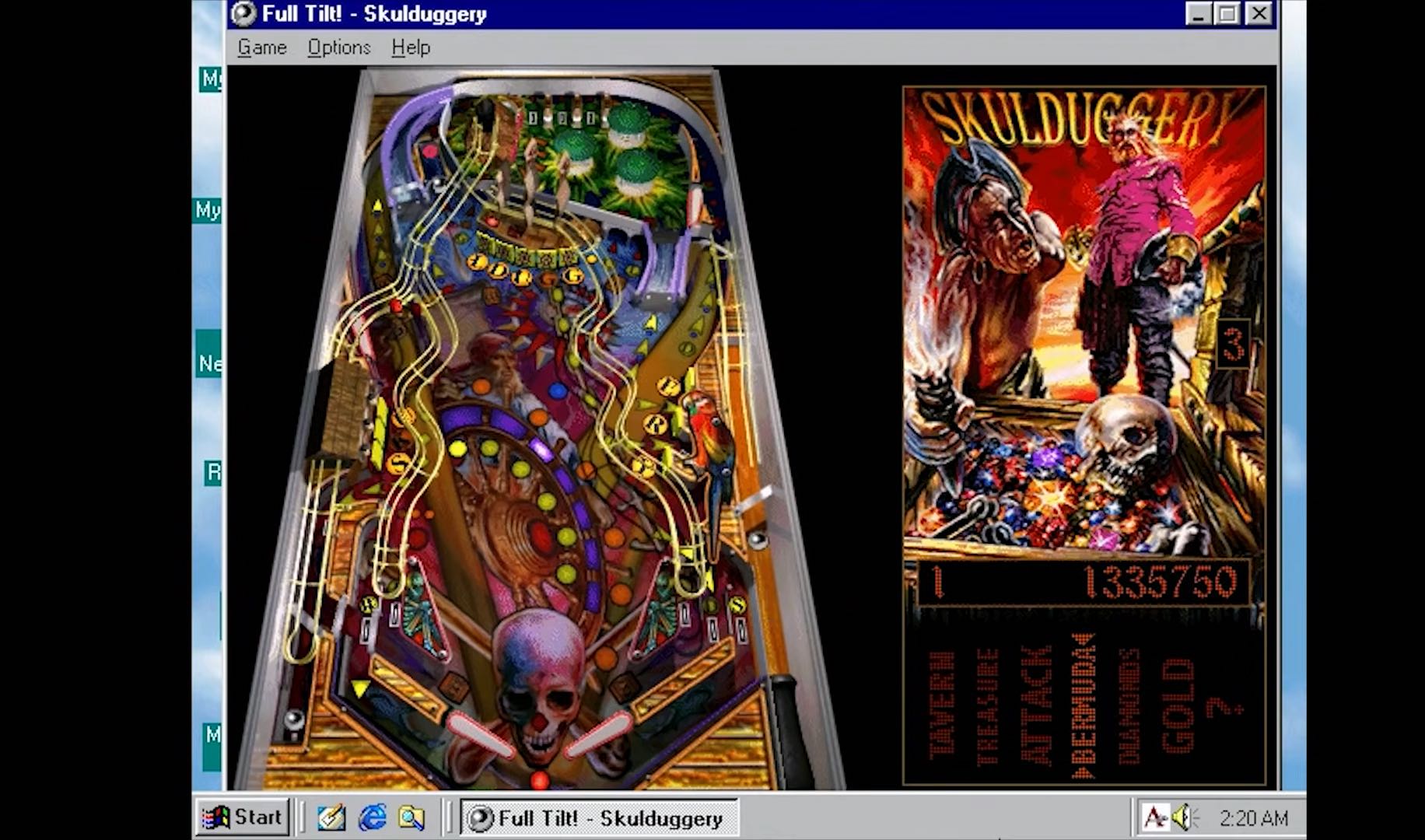
The full release included two additional tables to go with Space Cadet: Skulduggery, a pirate-themed pinball table, and Dragon’s Keep, a more familiar medieval fantasy-inspired backdrop complete with a menacing dragon on the right-side panel of the game. All the levels rendered in 3D and the full version upscaled the resolution to 1024x768.
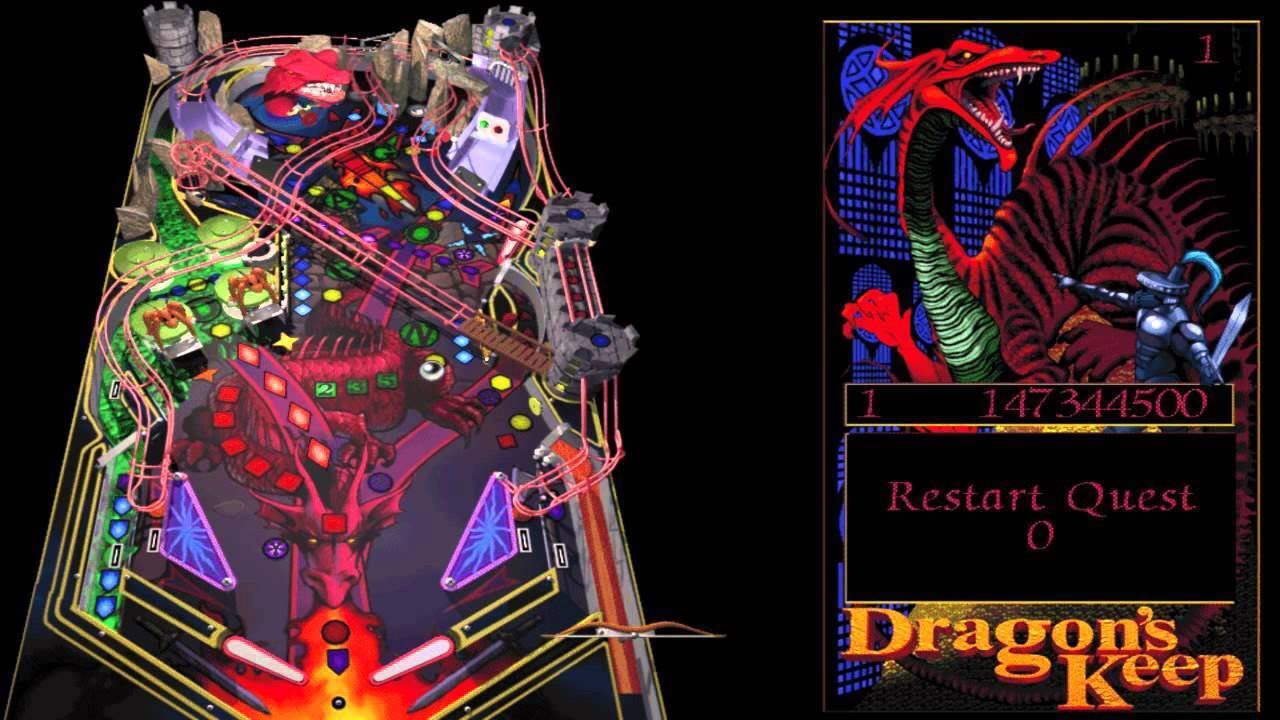
It’d be difficult now to find people who know about Space Cadet as more than just a playable demo, even so than those who own a copy of Full Tilt! In part because of the alleged attempts of Microsoft to obscure the full game’s existence.

For one thing, in Window’s Space Cadet, the company names of Cinematronics and Maxis appear in a blurry red text against a black backdrop compared with Full Tilt! where both are in bright yellow in higher detail. In addition, Microsoft only included a text-based window containing details of the game, but never any hints of the Full Tilt! version.
None of it matters now since people fondly remember the experience of playing 3-D Pinball Space Cadet 20 years later. The sound of the bumpers, plunger, and the ball bouncing around the table are an immediate callback to a much simpler time. Perhaps even more than Windows 95 itself.
Arguably, Microsoft’s alleged hand at obscuring Full Tilt! or Space Cadet as a full-fledged game affected neither them nor Cinematronics and Maxis, both of which were acquired by Electronic Arts at some point.
Support and clamor for the rerelease of 3D Pinball Space Cadet in Windows persists at present, with many fan-made versions of the game available online reconfigured to run on modern computers. Surely, more interesting points will be raised when we talk about Full Tilt! Pinball 2 (1996), but that is a story for another day.


